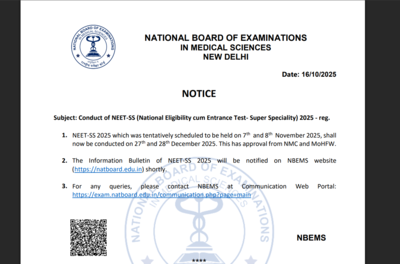Graduated, but can’t read properly: How America’s schools are failing to teach reading

In classrooms across America, a quiet catastrophe is unfolding. One in four young adults, aged 16 to 24, cannot read beyond a basic paragraph. They can make sense of a menu, a short text, a road sign. But when words stretch into ideas, they falter.The data, released in December 2023 by the National Center for Education Statistics (NCES) in partnership with the Program for the International Assessment of Adult Competencies (PIAAC), is unflinching. Between 2017 and 2023, the share of young adults reading at the lowest literacy levels jumped from 16% to 25%, a staggering rise in just six years.According to the American Institute for Research (AIR), that translates to about five million young Americans, roughly the population of Alabama, who cannot comprehend complex text despite years of schooling. Even more troubling: While high school diploma rates climbed from 50% to 55% over the same period, according to the survey by AIR researchers, literacy scores among young diploma holders dropped faster than those of any other age group.
Poverty, pandemic, and policy collide
The roots of this collapse run deep. Poverty, housing instability, and systemic neglect have long undercut learning. Classrooms are overcrowded. Teachers are stretched thin. Then came the pandemic, and the fragile scaffolding of literacy gave way.When schools shut down, reading instruction disappeared overnight. Many adult education programs closed permanently, leaving millions adrift. But this is more than a pandemic story. It is a reckoning with what American schooling has quietly become, a system where students are promoted without proficiency, where grades replace growth, and where technology offers shortcuts that erode deep engagement with language itself.
What literacy now means , and what it no longer guarantees
Adult literacy is weighed on a 500-point scale, divided into five levels. Level 1 means reading simple, explicit texts, filling out a basic form, understanding short sentences. Level 4 and 5 demand something far greater: The ability to analyze, infer, and evaluate complex information.In theory, every high school diploma represents readiness for Level 3 or higher. In practice, millions of graduates fall far short.Most state efforts focus on early reading, particularly before third grade, a period research links directly to lifelong academic success. States such as Indiana report modest gains in K–3 recovery post-pandemic, thanks to evidence-based instruction. But experts warn: Those who began school amid lockdowns, now in middle or high school, are carrying literacy gaps that may never close.
Where literacy dies young
Graduation, it seems, has become a hollow metric, a certificate of attendance rather than of achievement. Literacy advocates suspect that pressure to inflate graduation rates has led districts to push students through, regardless of skill. Others believe it’s simply triage, exhausted educators doing what they can in impossible conditions.Either way, the result is the same: A generation entering adulthood credentialed but illiterate, unprepared for college, employment, or civic participation.
The technology trap
Reading once meant struggle, the effort of thought, the wrestling with meaning. Today, meaning comes pre-packaged. Algorithms summarize. AI paraphrases. Information flows easily, but comprehension does not.Literacy, once the foundation of democracy, is now eroding beneath a culture that prizes speed over understanding. Students can search anything, yet comprehend almost nothing deeply.
A starved system
Even those who want to learn have nowhere to turn. ProPublica reported in 2022 that less than 3% of adults who need literacy services actually receive them. Federal funding for adult education has remained stagnant for more than two decades. The result: Years-long waitlists and programs turning away students who can’t read.Meanwhile, policymakers hail rising graduation rates as a success story. They are not. They are a smokescreen. Behind every diploma is a young adult who may not be able to read a job contract, follow prescription instructions, or vote with a full understanding of a ballot.
A nation losing its words
The rise of functional illiteracy is not just a statistic; it is a warning. The United States has built a system where education ends without understanding, where young adults emerge with credentials but without power, the power to interpret, question, and think.If literacy is the lifeblood of democracy, then America’s pulse is fading.





